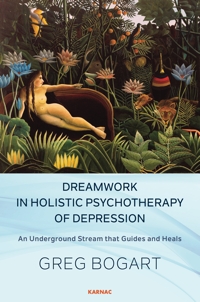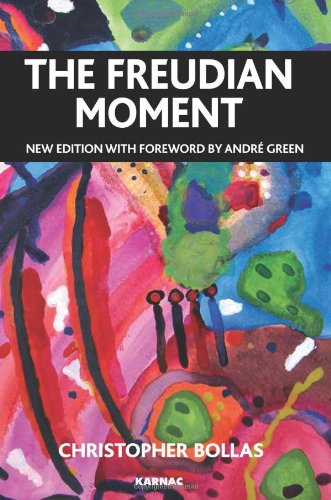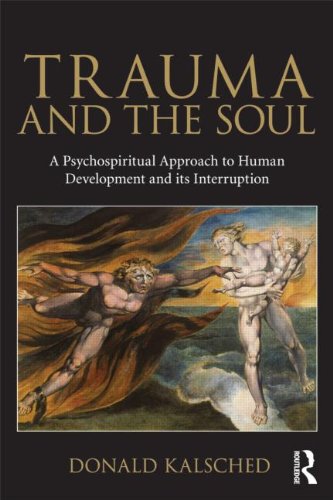Dreamwork and Self-Healing: Unfolding the Symbols of the Unconscious

Book Details
- Publisher : Routledge
- Published : 2009
- Cover : Paperback
- Pages : 324
- Category :
Jung and Analytical Psychology - Catalogue No : 26653
- ISBN 13 : 9781855757585
- ISBN 10 : 1855757583
Also by Greg Bogart
Our Customers Average Rating
Read all reviews (1)





There have been many previous books on the physiology of dreaming, the history of dream interpretation, and the meaning of specific dream symbols. But there have been relatively few books exploring the moment-by-moment process of interpreting dreams. This book guides you through this interpretive process, and illustrates how dreamwork promotes emotional, relational, and spiritual transformation. It explores how working with dreams enhances our emotional life, deepens our capacity for relationship, and helps us gracefully navigate change and transitions.
The author shows that dreamwork is a natural antidepressant, is effective in transforming anger, bereavement, couples conflicts and impasses, and aids the process of individuation. The book explores archetypal themes and complexes, synchronistic experiences and spiritual awakening in dreams, and representations of the body in dreams. The final chapter, "Taming Wild Horses", explores animal dream symbolism and its importance for enhancing our human sexuality. The book also describes the Dream Mandala, a method of self-transformation through the union of opposites - the charged polarities of the personality. Dreamwork and Self-Healing will interest all readers who wish to learn about dreams and their healing potential.
Reviews and Endorsements
Dreams are potent catalysts of change. Their luminous images ignite the light of consciousness within us and become a source of energy and guidance, an axis of spiritual sanity. Dreams are transformative when utilized in psychotherapy, or by couples and friends who work with dreams together to assist and support one another, and to enhance their knowing of one another. Contemplating our own dreams through a journal or in silent meditation is also powerfully self-liberating. In all of these ways, we can inquire deeply into each dream image, drinking in its multiple meanings and messages, the feelings each dream stirs.
'This book makes an important contribution to our understanding of dreams and psychotherapeutic technique. Greg Bogart shows how Jungian dreamwork can be applied effectively in brief-term and long-term therapy, couples counseling, group process work, and as a catalyst for personal transformation. "Taming Wild Horses" is a powerful case study that's unlike anything I've ever read. Bogart's creative reading of Jung, Von Franz, and Edinger, his centering, integrative dream mandala method, and his brilliant chapter on dreams and spirituality make this book highly recommended reading.'
- Stanley Krippner, PhD, Co-Author Extraordinary Dreams and How to Work with Them
'This is a book on dreams like no other. Greg Bogart's inspirational approach to spiritual depth psychology is potent medicine indeed. We find ourselves drawn into these gripping stories, awed by the vitality of dreams, which reveal both the sources of our wounding and paths to healing. Bogart's innovative approach to the Dream Mandala allows us to reach the organizing foundation of dreams, and to perceive their profound relational, archetypal, and spiritual significance. This book will be a beacon for anyone seeking the guidance and wisdom that comes to us from the mystery within.'
- Linda Schierse Leonard, PhD, author of The Wounded Woman: Healing the Father-Daughter Relationship
'For followers of both Freud and Jung, our analytic work must balance the dream with the transference. While the transference relationship has been abundantly considered in the literature, the process of dream analysis in recent years has remained unaddressed. Finally, a unique and remarkable book has appeared that is valuable to the student, the patient, and the informed clinician. Bogart's subtle, brilliant reflections provide an in-depth resource for Jungian analytic thought reflecting his extensive experience as a writer, teacher and clinician. I highly recommend Dreamwork and Self-Healing for professionals, their clients, and others given to self-reflection.'
- John Conger, PhD, psychoanalyst, author of Jung and Reich: The Body as Shadow
'That Jungian dream work can advance psychological healing is convincingly illustrated in this book. Properly understood, dreams enhance the dialogue between therapist and patient about specific problems in living, contribute to a therapist's deductions about a patient's internal object relations, and add to the growth of the patient's self understanding. In his beautifully detailed accounts of clinical cases, Greg Bogart shows himself able to listen sensitively to his clients' dreams and to share what he finds in them. He demonstrates that dream symbols, delved into with respectful curiosity, can often convert a patient's complexes into constructive life energies.'
- John Beebe, MD, Jungian analyst, author of Integrity in Depth
'This is a rich and enthusiastic book about dreams in clinical practice. Bogart's approach to dreams is inspired mainly by the classical and archetypal Jungian traditions. Through the many detailed accounts of his patients' dreams (and some of his own) he explores how relationships, archetypal themes, complexes, persona and shadow, anima and animus, individuation, synchronicity, spirit and body are expressed in dream work. The clinical vignettes demonstrate the evolving therapeutic process as facilitated by dreams and reflected in them. Bogart's passion, respect and devotion to working with dreams is palpable throughout the book and so is the therapeutic, healing effect his approach has on the patients presented in the book.'
- The Journal of Analytical Psychology
Contents
PART I. THERAPEUTIC DREAMWORK
1. Introduction
2. Dreamwork and Psychotherapy
3. Dreamwork and Relationships
4. Twenty Dreams of a Young Artist
PART II. JUNGIAN DREAMWORK
5. Archetypal Themes
6. Unfolding the Complexes in Dreams
7. Persona and Shadow in Dreamwork
8. Anima and Animus in Dreams
9. Dreamwork and Individuation
10. The Dream Mandala
11. Synchronicity and Dreams
12. Spirit and the Body in Dreams
PART III. CASE STUDY
13. Taming Wild Horses: A Study of Animal Symbolism and Male Sexuality
About the Author(s)
Greg Bogart PhD, MFT, is a psychotherapist in private practice and lecturer in the department of Psychology at Sonoma State University, in northern California. He is also an adjunct faculty member at the California Institute of Integral Studies (CIIS). He is the author of numerous books, including Dreamwork and Self-Healing: Unfolding the Symbols of the Unconscious, Astrology and Meditation: The Fearless Contemplation of Change, In the Company of Sages: The Journey of the Spiritual Seeker and Planets in Therapy: Predictive Technique and the Art of Counselling.
Customer Reviews
Our customers have given this title an average rating of 5 out of 5 from 1 review(s), add your own review for this title.
Scott Kiser on 11/06/2010 17:42:59




 (5 out of 5)
(5 out of 5)
Bogart passionately affirms the immense value of therapeutic dreamwork. Far from being merely an academic treatise on Jungian dream analysis, this book is particularly successful in a much more crucial dimension, that of practical life-application. While it provides a substantive and compelling presentation of Jungian dreamwork, this presentation is grounded in application to a broad range of vignettes that demonstrate profound life-transformation. The important role of dreamwork within the psychotherapeutic process is clearly evident throughout the book, an emphasis that is especially significant for clinical practitioners who will find it of great value to their work. Bogart also moves beyond an exclusively individual focus by providing a chapter on the healing impact of dreamwork within the context of relational problems, a much-needed perspective regarding an application of dreamwork that is usually not given adequate attention. Perhaps the strongest contribution of the book is Bogart's discussion of core Jungian concepts and their application to case examples. His articulation of such concepts as archetypes, complexes, persona and shadow, anima/animus, synchronicity, the mandala, and individuation reveals their essential meaning through the dynamic lens of individual dreams and their healing messages. These conceptions come to life, taking on vivid and urgent form as the reader is led to a deeper understanding of their transformative purpose in the dreams of everyday people who struggle for greater wholeness. The central focus on dreamwork as a catalytic facilitator of individuation, and in turn, of individuation as an inherently spiritual process of death and rebirth, represents one of the most crucial and important aspects of the book. For the reader, this affirms and heightens the critical awareness that much is at stake regarding dreamwork, that beyond surface-level interpretations of dream imagery his or her life hangs in the balance, or rather the condition of imbalance that must be sacrificed and left behind on the path of healing. Bogart passionately calls us to unify our inner opposing forces and tensions, to become more fully integrated, balanced, and whole human beings through surrendering to the summons of individuation within our dreams.
- Scott Kiser, Ph.D, Saybrook University
You may also like
Trauma and the Soul: A Psycho-Spiritual Approach to Human Development and its...
Donald Kalsched
Price £46.99
Dreamwork in Holistic Psychotherapy of Depression: An Underground Stream that...
Greg Bogart
Price £35.99
The Absent Father Effect on Daughters: Father Desire, Father Wounds
Susan E. Schwartz
Price £29.69
save £3.30







